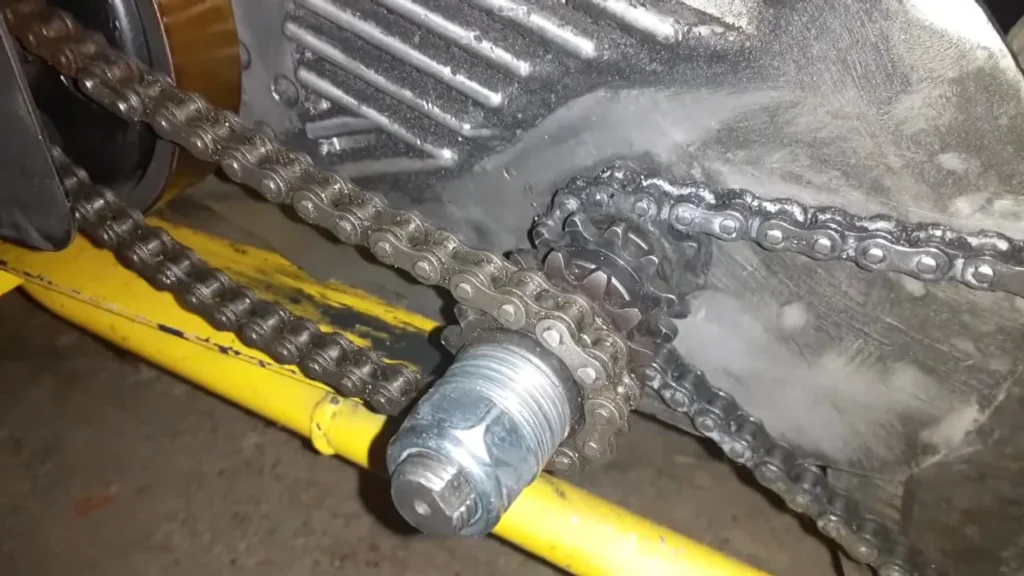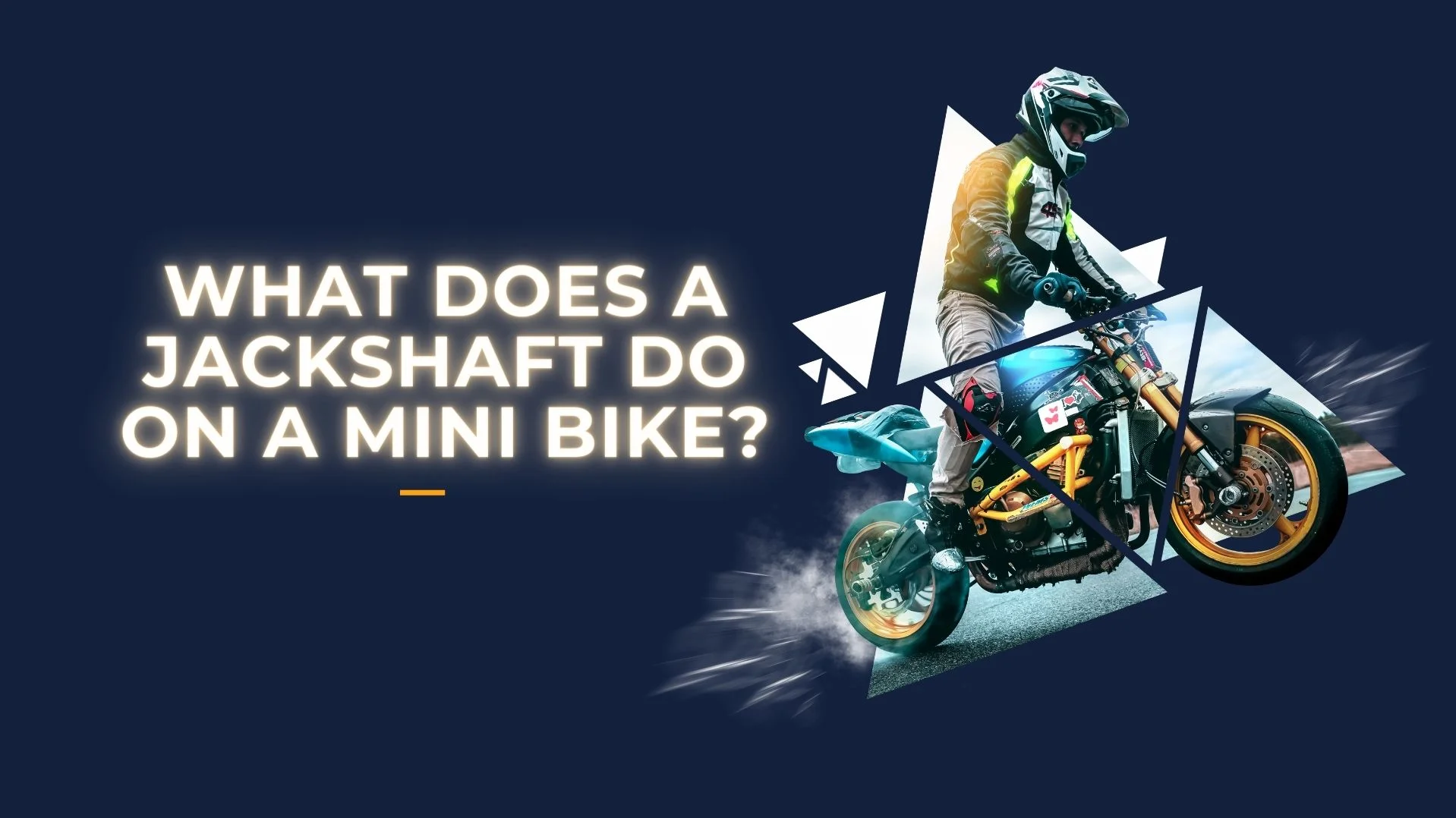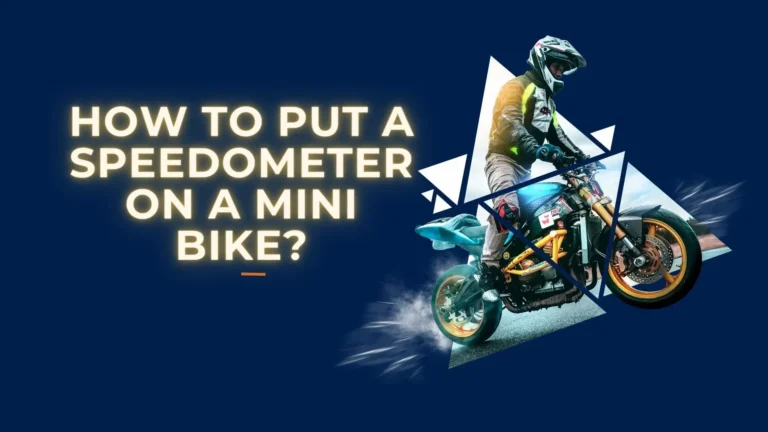What Does A Jackshaft Do On A Mini Bike?
A minibike’s jackshaft serves to efficiently transfer power from the engine to the rear wheel, utilizing chains or belts to offer precise torque and speed control. Additionally, it allows for gear ratio adjustments, enhancing overall performance and enabling versatile wheel placement on either side.
Mini bikes are popular small off-road motorbikes built for recreation and utility use. They feature basic drivetrains with an engine, clutch, chain and sprockets transferring power to the rear wheel. Many builders choose to add a jackshaft to provide more flexibility in gear ratios and clutch engagement RPM.
A jackshaft is an intermediate drive shaft mounted between the engine and rear wheel. It allows the clutch and wheel sprocket to be positioned independently. This enables tuning the drivetrain for acceleration versus top speed by changing jackshaft sprockets. It also alters clutch engagement relative to wheel speed, reducing heat buildup.
While adding some complexity, jackshafts bring versatility. This article explores the key benefits of jackshafts, how to set them up properly, and examples of high performance builds using them. Whether you are looking to optimize gearing or reduce clutch heat, read on to learn if a jackshaft is right for your next mini bike project.
Benefits of Using a Jackshaft
Provides Flexibility in Gear Ratios
One of the biggest advantages of adding a jackshaft is the flexibility it provides in tuning gear ratios. Without a jackshaft, the gear ratio is fixed based on the engine crankshaft to wheel sprocket relationship. But with a jackshaft, different drive sprockets can be mounted to provide a wide range of gear ratio options.
Gearing flexibility makes it easier to optimize a mini bike for acceleration versus top speed. Acceleration can be maximized by using a larger jackshaft sprocket and smaller rear wheel sprocket. This increases torque to the wheel at the expense of top speed. For optimizing top speed, a smaller jackshaft sprocket and larger rear sprocket can be used to reduce torque but allow higher RPMs.
Allows Adjusting Clutch Engagement RPM
The jackshaft also enables changing where the clutch engages in the RPM range by altering the clutch sprocket size. Engaging the clutch at lower RPMs reduces heat buildup that occurs at high speeds. This improves clutch life and avoids potential failures.
Provides Component Layout Flexibility
In addition to gearing and clutch benefits, a jackshaft provides component layout flexibility. The engine location can be optimized for weight distribution since the jackshaft transfers power wherever needed. It also facilitates switching the drive side from left to right which is useful in circle track racing. Shorter chain lengths are possible as well, reducing unwanted slack and chain slap.
Jackshaft Setup and Configuration

There are a few key considerations when selecting and configuring a jackshaft on your mini bike:
Types of Jackshafts
- Engine mounted – Attaches directly to the engine using a mounting plate
- Frame mounted – Mounts to the bike’s frame or custom bracket
- Combo unit – Combination engine and frame mount style
Sprocket Size Selection
- Larger jackshaft sprocket = more acceleration, less top speed
- Smaller jackshaft sprocket = less acceleration, more top speed
- Experiment with different tooth counts to optimize gearing
Clutch Mounting
- Can mount clutch directly to jackshaft
- Lets you alter clutch engagement RPM
Kits and Components
- Complete kits available for simpler install
- Can also piece together parts like shaft, sprockets, bearings, etc.
Mini Bike Gear Ratio & Top Speed Calculator
Gear Ratio:
Top Speed: MPH
Gearing Math and Calculations
The jackshaft has two sprockets – the driven sprocket attaches to the clutch and the drive sprocket drives the rear wheel.
To determine the overall gear ratio:
- Divide the rear sprocket teeth by the clutch sprocket teeth to get the jackshaft ratio
- Divide the rear sprocket teeth by the engine’s crankshaft sprocket teeth to get the axle ratio
- Multiply the jackshaft ratio by the axle ratio to get the overall ratio
Downsides of Jackshafts
While jackshafts provide some significant benefits, there are also a few potential downsides to consider:
Increased Space Requirements – Jackshafts take up additional space on the frame compared to a basic direct drive setup. This can lead to a tighter build and packaging challenges.
Added Complexity – There are more moving parts and components in the drivetrain. This increases the chance of mechanical issues and maintenance requirements.
Potential Power Losses – Each additional shaft and sprocket linkage results in a small power loss through friction and component efficiency. This may slightly reduce maximum speed.
Access for Ratio Changes – Depending on the mounting, changing jackshaft sprockets to alter gear ratios may be more difficult than a basic rear wheel sprocket swap.
Overall, the performance benefits of gearing flexibility and optimized clutch engagement usually outweigh the downsides of increased complexity and tighter packaging. But each builder will need to evaluate if a jackshaft makes sense for their specific project goals and requirements.
Example Builds and Use Cases
Here are some common examples of how jackshafts are utilized for different mini bike builds and purposes:
Circle Dirt Track Racing – Jackshafts allow switching the drive side from left to right for optimal traction going around oval dirt tracks. The ability to fine tune gearing for quick acceleration out of turns is also beneficial.
High Speed Focused – To maximize top end speed, a build may use a smaller jackshaft sprocket and larger rear sprocket. This provides less low-end torque but higher achievable RPM.
Acceleration Focused – For rapid acceleration and wheelies, a larger jackshaft sprocket and smaller rear sprocket can be used to increase torque to the wheel. Top speed is traded off for explosive starting thrust.
Heavy Duty Utility – When a mini bike is built for towing, farming, or other utility jobs, low-end grunt is often the priority. A jackshaft with gearing focused on torque rather than speed suits these applications.
The jackshaft really shines for niche builds where greater drivetrain flexibility is needed. It may be less critical for a basic recreational trail rider prioritizing cost and simplicity.
Conclusion
In conclusion, jackshafts can provide significant benefits for mini bike builds needing enhanced drivetrain flexibility and performance tuning capabilities. The key advantages are the ability to optimize gear ratios for acceleration or top speed and reduce clutch heat buildup.
Whether a jackshaft makes sense depends on the project goals and space requirements. They allow advanced tuning and setup options, but do add complexity. For basic recreational builds focused on simplicity, a direct drive may suffice.
But for those looking to push the limits of their mini bike’s speed, power or handling, a jackshaft enables the advanced gearing and clutch engagement control needed to take things to the next level. If your next build calls for maximized acceleration, minimized clutch slip, or configurable gearing, then incorporating a jackshaft could be the right choice to meet those needs.








